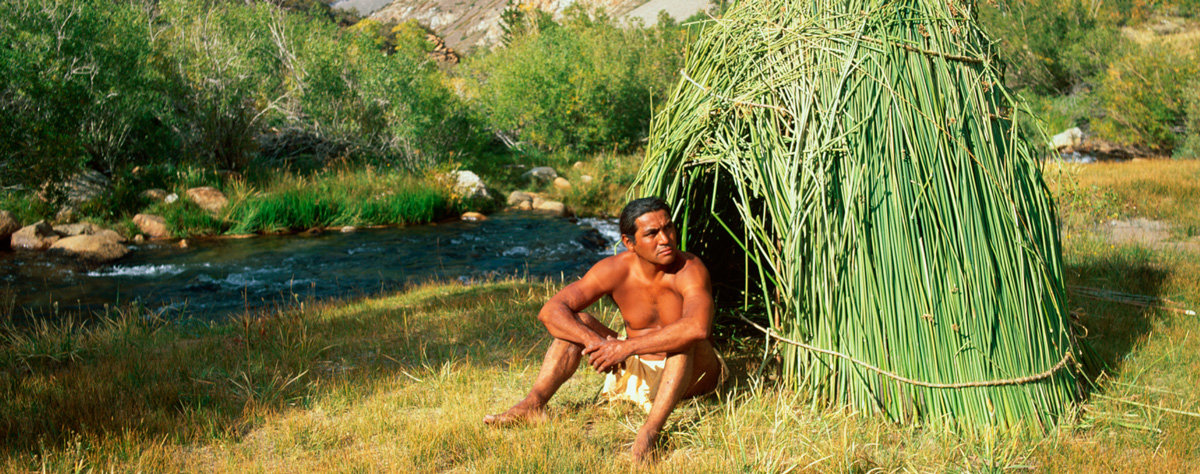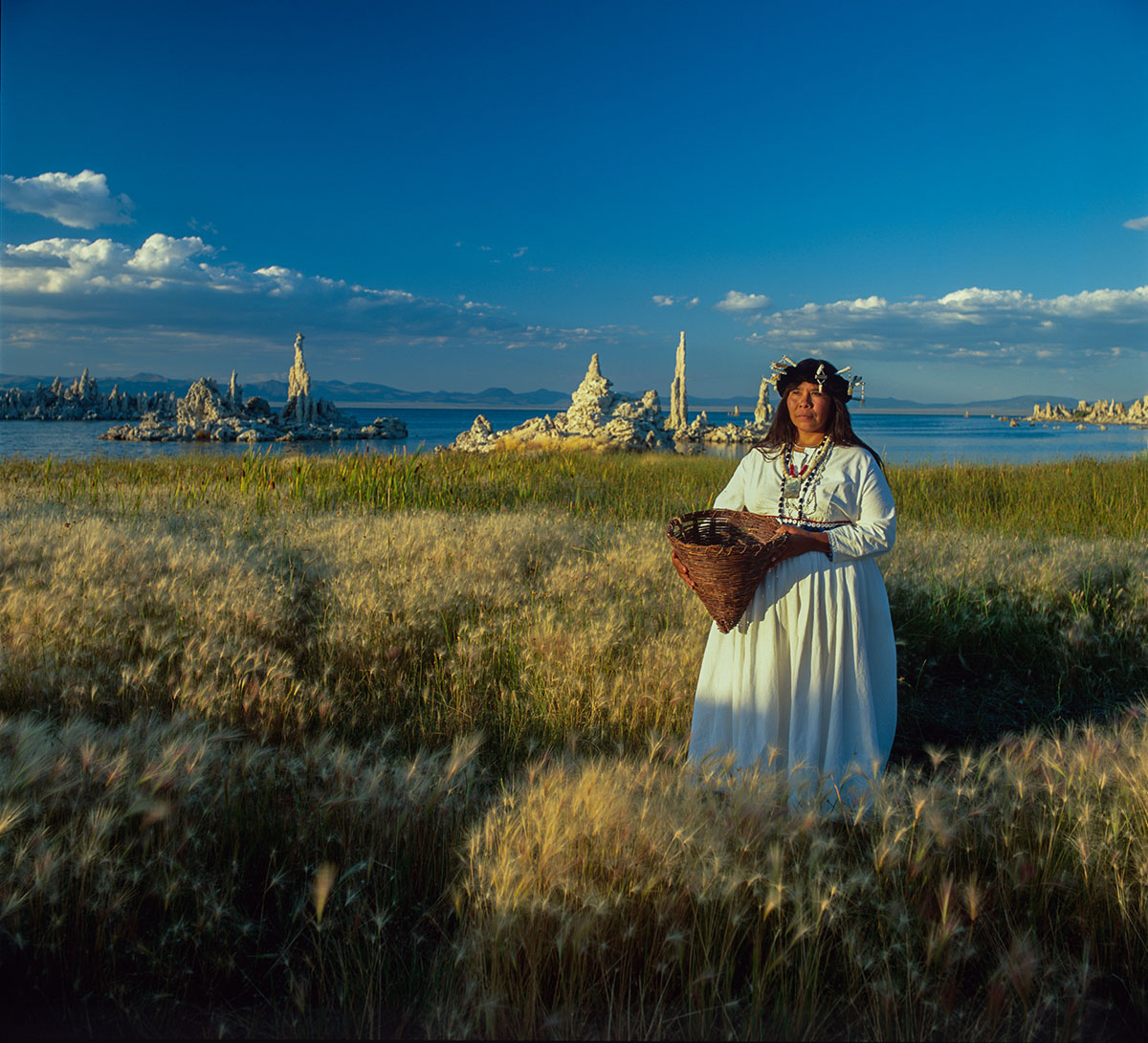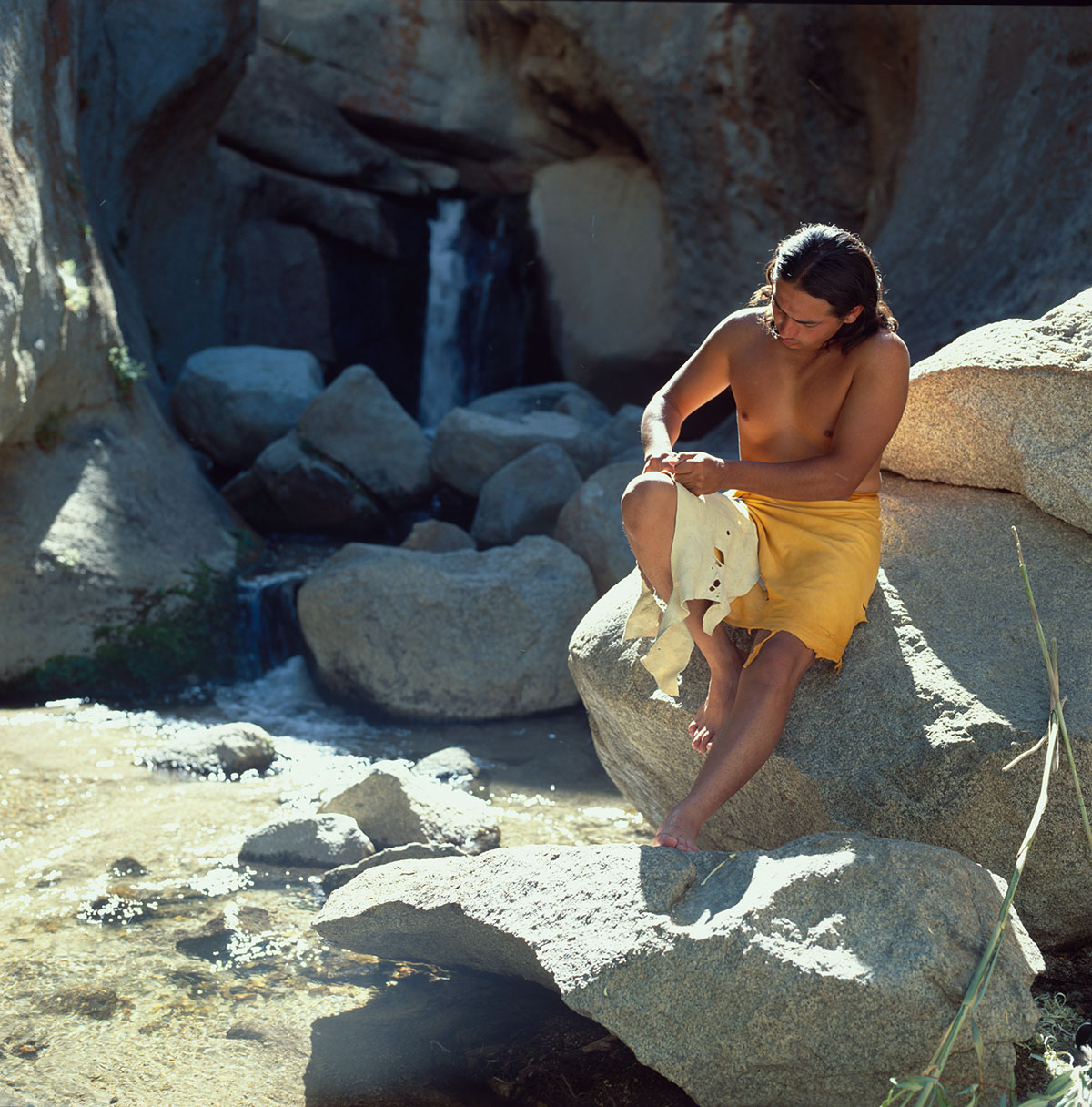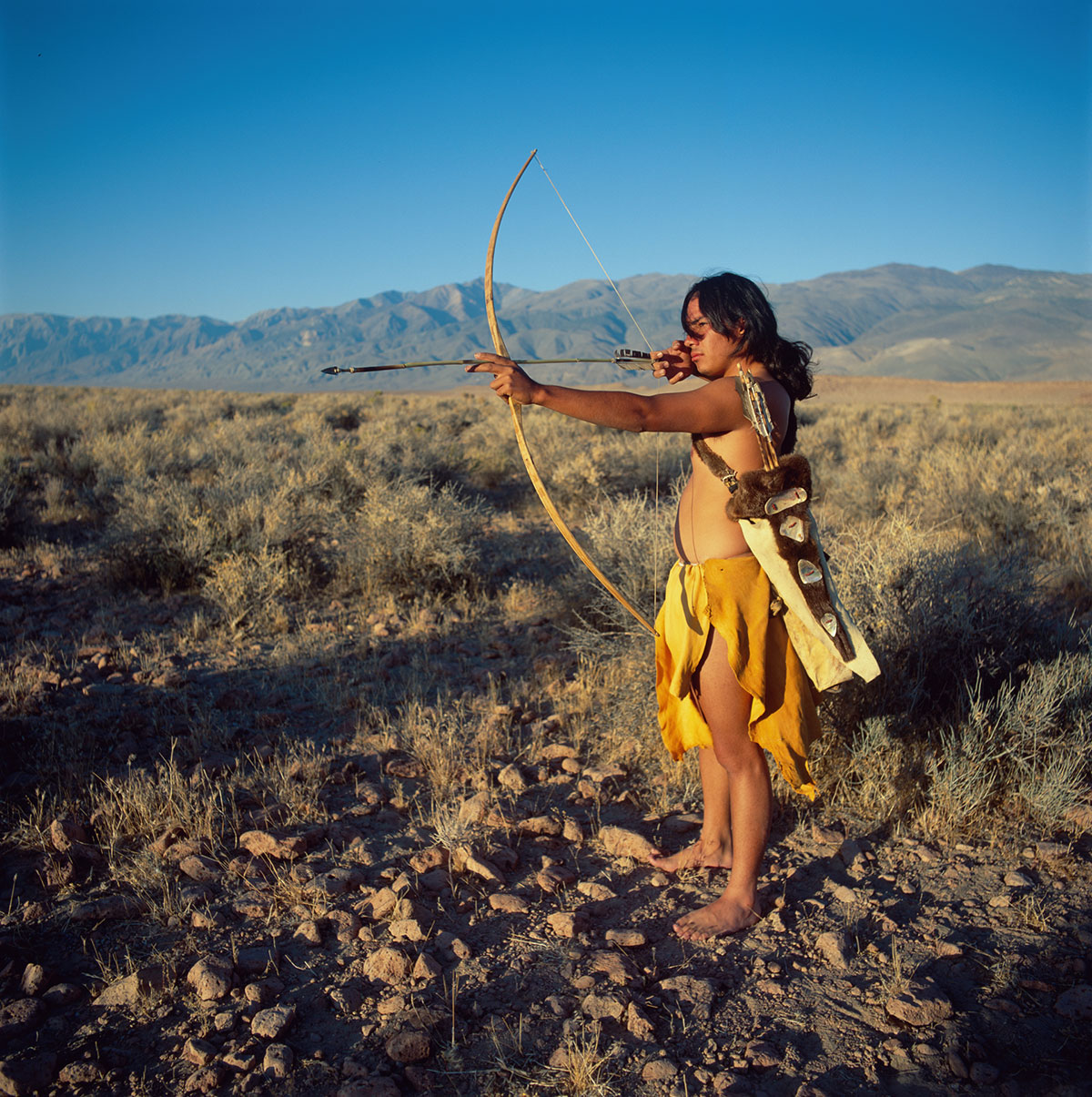
Paiute-Shoshone or Native Americans











Date
1992
Category
people, travelAbout This Project
MYTH NATIVE AMERICANS
Life of the Paiute/Shoshones between tradition and reality
Native Americans are back in. At least for us. Whether they’re telling us that money can’t be eaten, or promoting creative projects, you see their messages everywhere, or those that pretend to be theirs. America influences Germany like no other country in the world. Not only politically, but above all in setting new trends and fashions. And as far as the Native Americans are concerned, even as children we have an idea of a vast country where Winnetou bravely fights against the cowboys. What’s the point of all this? Does Native American heart really know no pain? Or do you only dance with wolves in Hollywood? I wanted to get an idea of this and other things when I first flew to the US in 1992. The most important thing was: leave all prejudices at home, so as not to keep the famous drawers open in advance when collecting impressions. Especially when it comes to Native Americans, because I wanted to get to know America and its native people as they really are, and not look for the picture that Piere Bryce drew in the minds of millions of children. So the first encounter with an Native American was rather accidental and unexpected and then became so important for my further stay. It was in Bishop California, south of Mono Lake. Where tourists from Yosemite National Park pass by in the direction of Death Valley. On the other hand, a small museum of the Paiute/Shoshones usually goes unnoticed. What goes unnoticed is that this museum is on a reservation. It was only by chance that I looked at the few exhibits and struck up a conversation with a man who, despite all my suppressed prejudices, looked like Winnetou himself. And as it turned out, he was real. Not real Winnetou, but real Paiute. We made friends. Not around the campfire and with a peace pipe, but in such a way that I was introduced to his friends on the reservation. I didn’t have to prove my bravery there, but one thing: that my interest in you is genuine and not for the sake of money. Because that hasn’t changed in the last 500 years since Columbus landed until today: the Native Americans were and are still being exploited. If it was once their country that the white man wanted from them, mineral resources, gold, for which he murdered and humiliated, what is happening today is no less tragic. Because now pretty much the last Native American has been “civilized” by the white man and squeezed into a reservation, their land has been sold and their sacred mountains have been riddled with mining and cultural goods are now being sold off. White people copy their ceremonies, a weekend Indian sweat lodge for $500.00. Celebrated by a white “medicine man”, he gave himself the name. But in all the years that the Native Americans have been tossed back and forth between American assimilation and preservation policies, they have learned one thing: to get along with the white system. To recognize what their own values mean, to know where they come from. They can now say who they are again without fear of being denounced. And they make use of it, I was able to see that for myself on the reservation in Bishop. Paiute – Shoshone Culture Center is at the Museum where I met Raymond. And as I soon realized, the museum is only a small part of it. Because this is where the language lessons in Paiute take place. Because only a few of the parents still speak their old language. The younger ones have already grown up in a predominantly white society and now have to relearn their mother tongue as if it were a foreign language. And it is paradoxical: the white man’s system, which almost completely destroyed this culture, is now helping them to learn their own language again. Because the old Paiute woman who leads the language class bases her lessons on old records of white researchers and settlers. She says: if she didn’t have these notes, many nuances of the language would already have been lost. But despite all that, it’s hard. Of course, the Paiute language does not even know many of our modern terms. Therefore, it may be difficult to reintegrate them into everyday life. But that’s not the point here. They are aware that their old culture can never be the same again. What is at stake is to preserve this culture in the hearts of the people, to let the people come to terms with themselves again. Knowing who you are and where you come from. To be proud of it and not to deny yourself. Because that was what American politics had done for years. Hardly any Native American dared to admit his origin. And thinking Native American again helps also the language. But of course this cannot really succeed completely. Because it is like after the fall: once the dark word has been learned, it is difficult to forget again. Because the Native American language is much softer, it doesn’t even know many of our hurtful ways of dealing with people. Days when white America only plays a subordinate role are the pow-wow’s, Native American festivals with dance competitions. But it’s not just about dancing. Handgame is a popular game at these festivals. Two parties sit opposite each other. Sticks and bones are the accessories. The bones are two white sticks, one of which is marked with a stripe. Once they were made of bone. They are rolled back and forth in the hand to monotonous chants and finally hidden under the armpits. With the singing one tries to put the other party to sleep. Because she has to guess where which of the two bones is. It is indicated with the sticks, the little sticks. Wrong guess: hand over the sticks. The bones change teams. The winner is whoever has all the sticks at the end. There is always a hustle and bustle at the pow-wow’s. Art’s and craft’s are for sale. From Native American jewelery to arrowheads and the extremely tasty Native American tacos to woven blankets, you can find everything. But above all, people are here to meet friends and dance together. And anyone who has danced to the drums at such a pow-wow can feel the heartbeat of this nation. When a fire burns, everyone holds hands and dances around it under the nocturnal expanse of this country, then you feel that this is the culture that was born on this earth. The shrill, high voices of the singers and the dull beat of the drums could not be at home anywhere else in the world. And this is important to these people. Respecting their culture and not sell it. Let us eavesdrop. Anyone with a genuine interest in them is still welcome. What they don’t like, however, are the so-called “wan’bee’s”, the “wannabe” Indians. White people who dress and try to live like Native Americans. We can learn from each other but not become like each other as each has their own people and history. But unfortunately not all of them have remembered their own cultural heritage. It also seems to make little sense in modern America to work on an arrowhead, weave baskets or build one of the old dwellings. Because the steak is available in the nearest supermarket and in your own home the television is on for entertainment, probably the worst drug the Native Americans have been given since firewater. But so many sad things have been reported about Native Americans, alcohol and drugs that most people now believe that the last Native American is an alcoholic, living on welfare and vegetating on his reservation. Or one suspects the other extreme. Wilderness, campfire romance and medicine men. Most people don’t want to believe that there is a middle way. A regular job, a car, family and a home on the reservation. To eat steak or hamburger and at the weekend people dance to old chants at a pow-wow. Who has the most beautiful feather headdress, who dances the wildest among the men, who is the softest among the women. This is where the age-old gender roles come to the fore again. But with the Native Americans, they made sense. The tasks of man and woman were clearly defined. Everyone had tasks corresponding to their natural abilities. And the hard life there left no time for arguments. The children grew into their tasks with ease. The girls received replicas of mother’s kitchen tools and baby carriers as toys, the boys imitated hunting with bows and arrows. And children were allowed to be present at every event. Nothing has changed about that today. Children are not an appendage to the Native Americans, but are treated with the respect of an adult. There is no don’t do this, don’t do that. No: you’re still too small for that. When the older ones play handgame, the little ones sing along. Or fall asleep to the monotonous singing. When there is dancing, they dance along, imitating the great dancers. That’s how you learn from each other. What was I doing in this world now? I didn’t want to remain just a spectator, I’d grown too fond of these people for that. The opportunity came one day at the Culture Center. Raymond should present the museum in another city. Taking the museum inventory was out of the question. So photos, but where do you get them from? The presentation could not take place. A small slide show would have been ideal. Best with the old cultural objects, shown in the area in which they were used. But that would take a lot of time and money. So we tried together to obtain the necessary finances via state subsidies. Projectors would have to be bought, faders and much more would have to be procured. The funds were not approved. The disappointment was great. So I decided to tackle the project on my own, because of course I was also interested in the pictures. I was able to provide my working hours, cameras and film material myself. The projectors would have to wait then. A video recording of the slide show would also do for a start. But our project was to have another goal: to serve as visual aids for the children at school. Show them how the old dances were danced, how to build a Toni as a dwelling. Because many of them only knew their culture from stories. Because the dress and dances at the pow-wow’s are a confluence of many different tribes. The really old culture, which was cultivated before the white man appeared, was known only to a very few. This also meant for Raymond and I that we had to do a lot of research, interview a lot of the elders. And even they sometimes had to think for a long time, only knew some things from stories and already confused a lot in their memory. And then came the most difficult part: finding “models” for our recordings. Because not everyone who still mastered an old craft looked like his ancestor. To make it clear: the American fast food culture had robbed many Native Americans of their noble reputation. But in the end everything was right: the people, the locations, the light and the atmosphere. Because that was one of my ulterior motives. Not only to get the Native Americans in front of the camera, but to motivate them to continue cultivating their culture. Because many of our “models” had never danced in the old dance clothes, played the hand game far out in nature. And so the photography partly became a real “experience photography”, not to mention all the adventures I had to go through during this time. This ranged from the self-made dance costume, the award of an eagle feather to the point of a pistol to almost a rattlesnake bite. What remained, however, is the feeling of having thoroughly cleared out a cliché that I was carrying around with me. Knowing that Winnetou and Dance with Wolves will continue to flicker across the screen, but that I will see them with different eyes. Through the eyes of someone who knows all legends haven’t died yet.


